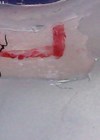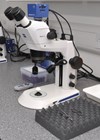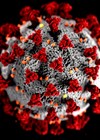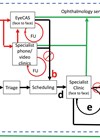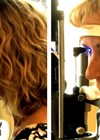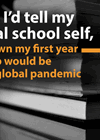Ophthalmology
Uncertainties and opportunities in ophthalmology training after the COVID-19 pandemic
Alexander Jones asks what impact the current pandemic will have on ophthalmology trainees. In my work as a Clinical Teaching Fellow, I have to admit that chaos is uncommon. Neither the anxious excitement of rushing to help an unwell patient...
Use of a smartphone repair microscope for microsurgical suturing simulation
Suturing ocular tissues under microscopic guidance is a skill that has declined in frequency, with the majority of cataract operations being sutureless. With the recent COVID-19 outbreak, training opportunities in theatre have declined further, given elective surgery cancellations. Subsequently, trainees...
Thinking outside the box – adapting to the COVID-19 lockdown
How can we avoid further delays to follow-up in glaucoma patients? The author asks if there is a socially distanced way to check IOPs in those at high risk of losing vision. Glaucoma is an asymptomatic condition. Loss of the...
Development of a modern surgical simulation suite to promote safer ophthalmic surgical training
For trainees, having access to surgical simulation equipment is more important than ever. The authors describe the creation of a bespoke teaching and training suite in Glasgow to help trainees develop their skills and promote surgical excellence. Simulation has become...
Redeployment during the COVID-19 pandemic: personal accounts from four ophthalmology trainees
We once believed that the coronavirus would not penetrate the safe confines of the United Kingdom, like so many outbreaks before this. Once the news came that this pandemic descended into our hospitals, the anxieties about redeployment began. Many of...
Designing ophthalmology services Part 3: How do we address the queues post‑COVID-19?
Part 1 of this series available herePart 2 of this series available here There is going to be enormous demand on ophthalmology services as they start to welcome patients back. The authors explain how modelling can help make the most...
Towards virtual reality conferences?
COVID-19 is forcing us to reconsider every aspect of life. The authors ask what future ophthalmic meetings could look like. The coronavirus disease COVID-19 pandemic disrupted ophthalmic conferences resulting in the cancellation of the majority of meetings in 2020, e.g....
Hot debates in medical retina and imaging: Perspectives from the Controversies in Ophthalmology 2020 virtual conference
Controversies in medical retina and imaging were debated during the Controversies in Ophthalmology 2020 virtual conference held during two mid-day scientific sessions on 27 and 28 March 2020. The author recounts key perspectives and presents viewpoint recommendations from the Vision...
Herpes zoster ophthalmicus: the essentials
Herpes zoster, also referred to as shingles, is a common infection most typically caused by the reactivation of varicella zoster virus that lies dormant (sometime for decades) in the dorsal root nerve ganglion following primary chickenpox infection [1]. In 10-20%...
Embracing assistive technology in the fight against sight loss
The author shares his own experience of sight loss and explains the vital role assistive technology can play in the lives of visually impaired patients. There is no doubt that sight loss continues to be a clear and present danger,...
Forward-tilt technique for intraocular pressure measurement in upgaze
The authors suggest a technique to improve the accuracy of measuring IOP in upgaze using Goldmann applanation tonometry. Graves’ ophthalmopathy, also known as thyroid eye disease, is an autoimmune inflammatory condition affecting the orbit and periorbital tissues [1]. It was...
Things I’d tell my medical school self, had I known my first year on the job would be during a global pandemic
In a conversation with his younger self, a foundation doctor reflects on the contrast between his expectations of medicine at university and the reality of working during the coronavirus pandemic. Every doctor arrives at medical school with nervous anticipation, yet...



